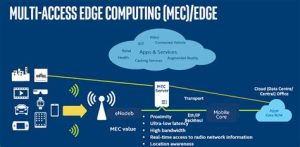Introduction:
As an advocate for technological advancements, the proliferation of IoT devices has sparked considerable benefits alongside significant security and privacy concerns. This article delves into the challenges posed by IoT devices, focusing on security vulnerabilities, data privacy issues, regulatory landscapes, and strategies for mitigating risks to ensure safer deployment and usage.
1. Understanding IoT Devices
Define IoT (Internet of Things) devices and their widespread applications. Explain how IoT devices connect to the internet and each other, collecting and exchanging data to facilitate automation, monitoring, and control across various domains.
2. Security Vulnerabilities in IoT Devices

Examine the security vulnerabilities commonly found in IoT devices. Discuss:
- Weak Authentication and Authorization: Devices using default credentials or lacking robust authentication methods are susceptible to unauthorized access.
- Lack of Encryption: Data transmitted between IoT devices and servers without encryption can be intercepted and manipulated by malicious actors.
- Firmware and Software Vulnerabilities: Outdated firmware and software in IoT devices may contain unpatched vulnerabilities, posing security risks.
- Physical Security: Physical access to IoT devices can lead to tampering or unauthorized modification, compromising their functionality and data integrity.
3. Privacy Risks and Data Protection
Discuss the privacy risks associated with IoT devices. Highlight:
- Data Collection and Sharing: IoT devices often collect sensitive data about users’ habits, behaviors, and environments, raising concerns about data ownership, consent, and unauthorized sharing.
- Location Tracking: IoT devices with GPS or location-based services may track users’ movements, leading to privacy infringements if not managed transparently.
- Third-party Access: Sharing data with third-party service providers or advertisers without explicit consent can undermine user privacy and trust.
4. Regulatory and Compliance Challenges
Examine the regulatory landscape governing IoT security and privacy. Discuss:
- Data Protection Regulations: Compliance with data protection laws (e.g., GDPR, CCPA) concerning data collection, storage, and processing practices.
- Industry Standards: Adherence to industry-specific standards (e.g., ISO/IEC 27001) for cybersecurity and privacy management in IoT deployments.
- Consumer Rights: Ensuring transparency, consent, and the right to access, rectify, or delete personal data collected by IoT devices.
5. Mitigating IoT Security and Privacy Risks

Explore strategies for mitigating IoT security and privacy risks:
- Strong Authentication and Access Control: Implementing multi-factor authentication and robust access control mechanisms to prevent unauthorized access.
- Data Encryption: Encrypting data both in transit and at rest to protect confidentiality and integrity against interception and tampering.
- Regular Updates and Patch Management: Ensuring timely firmware and software updates to address vulnerabilities and improve device security.
- Privacy by Design: Incorporating privacy principles (e.g., data minimization, transparency) into the design and development of IoT devices and services.
6. Building Consumer Trust
Discuss the importance of building consumer trust in IoT devices. Highlight the role of transparency, accountability, and proactive communication in addressing security and privacy concerns to foster trust among users and stakeholders.
7. Future Trends and Innovations
Conclude with future trends and innovations in IoT security and privacy:
- Edge Computing and IoT Security: Leveraging edge computing for real-time data processing and enhanced security at the device level.
- Blockchain for IoT Security: Exploring blockchain technology to secure IoT device identities, transactions, and data integrity.
- AI-driven Threat Detection: Using artificial intelligence (AI) for proactive threat detection and anomaly detection in IoT networks.
Informative Table: Common Security Vulnerabilities in IoT Devices
| Security Vulnerability | Description | Examples |
| Weak Authentication | Default or weak passwords | Admin/admin, 12345 |
| Lack of Encryption | Unencrypted data transmission | Plain text communication |
| Firmware Vulnerabilities | Unpatched software flaws | Exploitable bugs, outdated firmware |
| Physical Tampering | Unauthorized access and modification | Device tampering, physical theft |
Comparative Table: Privacy Risks in IoT Devices
| Privacy Risk | Description | Examples |
| Data Collection Practices | Collection of sensitive personal data | Health metrics, behavioral patterns |
| Location Tracking | Tracking user movements | GPS data, geolocation services |
| Third-party Data Sharing | Sharing data with third-party services | Advertisers, analytics companies |
Conclusion: Safeguarding IoT’s Potential
While IoT devices offer immense potential for innovation and efficiency, addressing security and privacy concerns is paramount. By implementing robust security measures, adhering to regulatory requirements, and fostering transparency, organizations can mitigate risks and build trust among users. Embracing emerging technologies and best practices will shape a future where IoT enhances lives while safeguarding data and privacy in an interconnected world.




